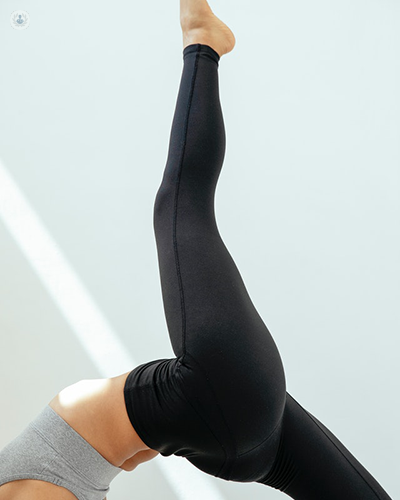Ask an expert: Is a hip arthroscopy right for me?
Written by:Minimally invasive surgical techniques, such as hip arthroscopy, which use cameras to provide the surgeon with visual feedback throughout the procedure are becoming increasingly commonly used to treat a huge variety of conditions. In this article, leading consultant orthopaedic hip surgeon Mr Giles Stafford gives an expert guide to what the procedure entails and what patients can expect from the recovery period following a hip arthroscopy.

What is hip arthroscopy?
Hip arthroscopy is a minimally-invasive form of surgery in which the surgeon is able to see inside the joint using a small telescope. Although initially used only to diagnose unexplained hip pain, this type of procedure which is sometimes known as ‘keyhole surgery’ has become increasingly used in recent years and has many applications, including treatment for conditions such as femoroacetabular impingement (FAI) and associated labral tears which have only been identified in recent years.
It offers lower risks, decreased blood loss and shorter recovery times as it uses small incisions unlike more traditional, open surgical techniques. Another advantage is that patients undergoing a hip arthroscopy can normally go home on the same day as their surgery as it can be performed as a day-case procedure.
How is hip arthroscopy performed?
Hip arthroscopy is typically performed under general anaesthesia with the patient lying on their back or side. The affected leg is placed into a special boot which helps to position it, allowing the surgeon access to the central compartment of the hip joint with the arthroscope, between the ball and socket.
Depending on the patient’s individual case, the surgeon may need to access the hip through further portals, typically between two and four in total. Once the camera is in position, the surgeon can begin work and the whole procedure usually takes between eighty and ninety minutes.
When is hip arthroscopy required?
Hip arthroscopy can be used to treat patients with a number of issues within and around the hip joint. It is commonly used in patients with cam-type femoroacetabular impingement, where the femoral head-neck junction within the hip has developed abnormally, causing a bony protrusion which can lead to joint damage and even early arthritis.
Similarly, patients with pincer-type femoroacetabular impingement where extra bone within the hip’s acetabulum can lead to joint damage and even osteoarthritis can benefit from surgery performed through a hip arthroscopy procedure.
Patients suffering from conditions such as femoroacetabular impingement or dysplasia (where the hip sockets are too shallow) are also likely to sustain damage to the acetabular labrum, a fibrous structure that surrounds part of the hip joint. Tearing or damage to this area can occur as a complication of a hip condition or directly from a serious injury but may also be repaired during a hip arthroscopy procedure.
How long does it take to recover from a hip arthroscopy?
As hip arthroscopy is a minimally-invasive procedure, recovery is a relatively quick process. Patients may need to use crutches for a short time immediately following surgery but they may walk independently as soon as they feel comfortable, which is usually after a week or so.
Usually after two weeks, patients are able to begin a phased return to work but they should avoid busy or crowded rush-hour transport initially. I encourage my patients to take gentle and non-impact physical exercise such as cycling throughout their recovery. This can begin from the outset as by allowing the muscles to get working, gentle stretches and movement aid recovery and also lower the risk of scar tissue developing within the joint. Once the patient’s stitches have been removed and their portals are healed, they may also begin swimming.
During the recovery period, my patients also engage in a four month long post-operative program. In the initial three month period, only non-impact exercise is encouraged as this allows the joint to fully heal and prevents inflammation of the muscle.
What is the success rate of hip arthroscopy?
Although hip arthroscopy offers excellent outcome for many people suffering from a range of hip conditions, it is not guaranteed to do so for every patient. One year after surgery, approximately eighty per cent of patients are satisfied that the procedure has improved their symptoms. Unfortunately, fifteen per cent may feel no change in their condition and five per cent feel that their symptoms have in fact become worse.
Post-operative data from imaging techniques such as MRI cartilage mapping and three-dimensional CT reconstructions is providing an ever more accurate picture of who may be best candidates for this type of procedure and your surgeon can advise on whether you are likely to benefit from a hip arthroscopy.
If you are seeking treatment for a hip problem and wish to discuss your treatment options further, you can book a consultation with Mr Stafford by visiting his Top Doctors profile.


